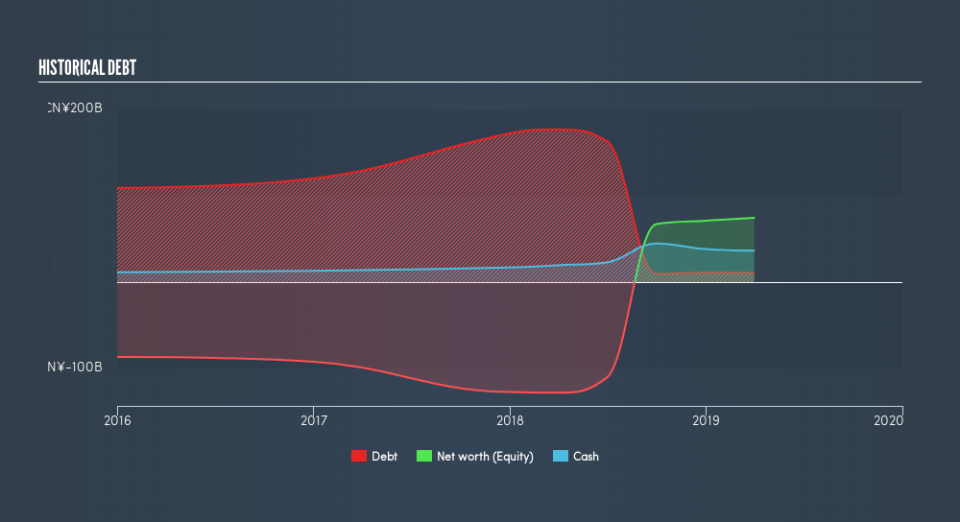These 4 Measures Indicate That Xiaomi (HKG:1810) Is Using Debt Reasonably Well

Warren Buffett famously said, 'Volatility is far from synonymous with risk.' When we think about how risky a company is, we always like to look at its use of debt, since debt overload can lead to ruin. As with many other companies Xiaomi Corporation (HKG:1810) makes use of debt. But the real question is whether this debt is making the company risky.
When Is Debt A Problem?
Debt and other liabilities become risky for a business when it cannot easily fulfill those obligations, either with free cash flow or by raising capital at an attractive price. Ultimately, if the company can't fulfill its legal obligations to repay debt, shareholders could walk away with nothing. However, a more frequent (but still costly) occurrence is where a company must issue shares at bargain-basement prices, permanently diluting shareholders, just to shore up its balance sheet. Having said that, the most common situation is where a company manages its debt reasonably well - and to its own advantage. The first thing to do when considering how much debt a business uses is to look at its cash and debt together.
See our latest analysis for Xiaomi
How Much Debt Does Xiaomi Carry?
You can click the graphic below for the historical numbers, but it shows that Xiaomi had CN¥10.6b of debt in March 2019, down from CN¥177.0b, one year before. However, its balance sheet shows it holds CN¥36.3b in cash, so it actually has CN¥25.8b net cash.
A Look At Xiaomi's Liabilities
We can see from the most recent balance sheet that Xiaomi had liabilities of CN¥50.2b falling due within a year, and liabilities of CN¥13.4b due beyond that. Offsetting these obligations, it had cash of CN¥36.3b as well as receivables valued at CN¥15.9b due within 12 months. So its liabilities total CN¥11.4b more than the combination of its cash and short-term receivables.
Given Xiaomi has a humongous market capitalization of CN¥193.0b, it's hard to believe these liabilities pose much threat. But there are sufficient liabilities that we would certainly recommend shareholders continue to monitor the balance sheet, going forward. Despite its noteworthy liabilities, Xiaomi boasts net cash, so it's fair to say it does not have a heavy debt load!
Also good is that Xiaomi grew its EBIT at 12% over the last year, further increasing its ability to manage debt. The balance sheet is clearly the area to focus on when you are analysing debt. But it is future earnings, more than anything, that will determine Xiaomi's ability to maintain a healthy balance sheet going forward. So if you want to see what the professionals think, you might find this free report on analyst profit forecasts to be interesting.
Finally, a business needs free cash flow to pay off debt; accounting profits just don't cut it. Xiaomi may have net cash on the balance sheet, but it is still interesting to look at how well the business converts its earnings before interest and tax (EBIT) to free cash flow, because that will influence both its need for, and its capacity to manage debt. Over the last three years, Xiaomi saw substantial negative free cash flow, in total. While that may be a result of expenditure for growth, it does make the debt far more risky.
Summing up
We could understand if investors are concerned about Xiaomi's liabilities, but we can be reassured by the fact it has has net cash of CN¥26b. And it also grew its EBIT by 12% over the last year. So we don't have any problem with Xiaomi's use of debt. Above most other metrics, we think its important to track how fast earnings per share is growing, if at all. If you've also come to that realization, you're in luck, because today you can view this interactive graph of Xiaomi's earnings per share history for free.
If you're interested in investing in businesses that can grow profits without the burden of debt, then check out this free list of growing businesses that have net cash on the balance sheet.
We aim to bring you long-term focused research analysis driven by fundamental data. Note that our analysis may not factor in the latest price-sensitive company announcements or qualitative material.
If you spot an error that warrants correction, please contact the editor at editorial-team@simplywallst.com. This article by Simply Wall St is general in nature. It does not constitute a recommendation to buy or sell any stock, and does not take account of your objectives, or your financial situation. Simply Wall St has no position in the stocks mentioned. Thank you for reading.


